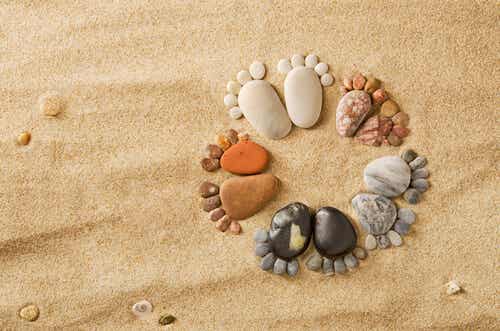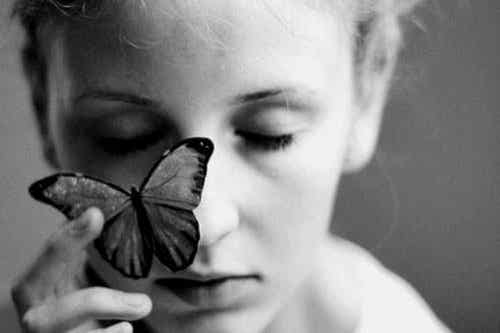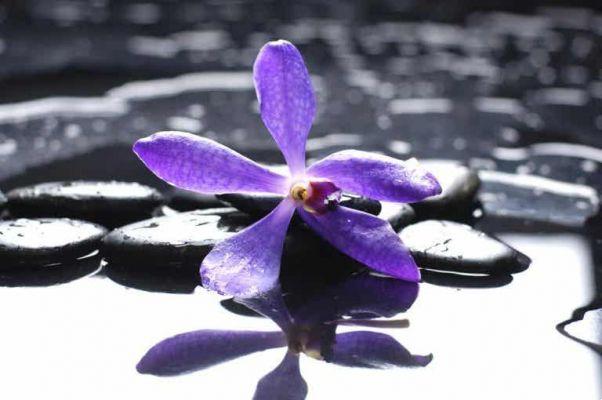
Last update: 17 September, 2020
Have you ever experienced a sudden, suffocating feeling of dread, anxiety or fear? Or to think that something terrible is about to happen? Have you ever felt overwhelmed by stress or on the verge of a nervous breakdown? It may seem like a daunting task to you, but calming anxiety quickly and in a few steps is possible thanks to some exercises that are based on breathing control.
You may think this is easier said than done. And, in part, you are not wrong. First, because reminding us to breathe in the midst of an anxiety attack, panic attack, stage anxiety, and so on - and doing it right - isn't for everyone, unless you've already done these exercises.
If you tend to suffer from panic attacks, we recommend that you try these exercises and do them regularly, by way of training, in situations where anxiety is controllable, so that you can then put them into practice when you need the effect they generate to calm the highest anxiety.
Breathing exercises to calm anxiety
We recommend that you take a deep breath and slowly fill your lungs with fresh air, starting at the bottom. Right now your attention is focused only on this gesture. Your mind is not occupied with any other activity, nor is it distracted by external stimuli or thoughts. You are simply tuning into your breathing, slow and quiet.
But it's not just a question of peace of mind. Your body begins to feel different, even if only for a moment. This is because as you focus on those slow, deep breaths, you are sending a message to your brain: it's time to calm down. Your brain, in turn, sends messages to your whole body that result in a feeling of calm.
This same action also works when you are in the throes of anxiety. Thanks to it you will get a real "balm" for the soul, for the body and for the mind in situations where you tend to breathe quickly and superficially, through short breaths.
Calm anxiety with breathing exercises
Often during an anxiety attack instead of trying to reduce the rate of breathing, we get trapped in feeling of not having enough oxygen, reflected in rapid breaths. This only increases panic and sends confusing messages to the brain which, in response, sends its signals to the body negatively affecting oxygen and carbon dioxide levels.
When we finally manage to regain control of our breathing, the brain receives the signal that it is time to correct the oxygen and carbon dioxide levels. relieving symptoms of malaise; as a result, we feel calmer. For this reason, it is so important to perform breathing exercises when we begin to feel the symptoms of anxiety and even when we are in the midst of an attack.
Easy abdominal breathing
This breathing technique is very simple and effective. To perform the abdominal breathing technique, follow these steps:
- Sitting or lying comfortably, with your eyes turned to the ceiling, close your eyes and relax your shoulders, trying to get rid of the tension. Place one hand on your stomach and the other on your chest.
- Inhale deeply and slowly through the nose. You should notice that the belly swells and the chest expands (don't overdo it).
- Slowly exhale through the mouth, keeping the jaw relaxed, and you will notice that the belly deflates and the chest returns to its starting position.
Repeat several times. To maximize the effects, inhale in four intervals and exhale in as many moments, trying to prolong each interval as much as possible. You can get better benefits if you hold the air after a few repetitions before exhaling four times. And if you manage to do four intervals in apnea (holding the air), even better.
Alternative breathing through the nose
This exercise can be a bit complicated, but it is very effective and, if practiced regularly, executing it becomes easier and easier. To perform this alternative nasal breathing technique, follow these steps:
- Place your right thumb on the right nostril, capping it.
- Breathe in through the left nostril.
- Place your index finger on the left nostril and inhale from the right nostril.
- Without moving your fingers, inhale from the right nostril.
- Plug the right nostril with your thumb and inhale from the left nostril.
It involves inhaling from one nostril and exhaling from the other, alternating them. This exercise is purifying for the body and mind and helps regain attention.
Ujjayi breathing
Ujjayu breathing is a yoga breathing technique, very useful for calming anxiety. Ujjaya (pronounced oo-jai) is commonly translated as "breath of victory" and has been used for thousands of years in the practice of hatha yoga. It is also known as "ocean breathing".
To perform this breathing technique, follow these steps:
1. Preparation:
- Sit comfortably and inhale deeply through your nose.
- Breathe out slowly through your mouth, as if you would like to mist up a mirror.
- Repeat several times to learn how to put the throat in the right position.
- Breathe in deeply through your nose.
- Exhale deeply through the nose, reproducing the warming gesture of the voice, but with closed lips. You should hear a sound very similar to what is heard in a shell.
- Repeat several times. Breathe to calm anxiety.
If you feel that anxiety is trying to take over, just breathe. The more you become familiar with the exercises we have described to you - or others that you have found yourself and already knew -, the easier it will be to calm your anxiety.


























